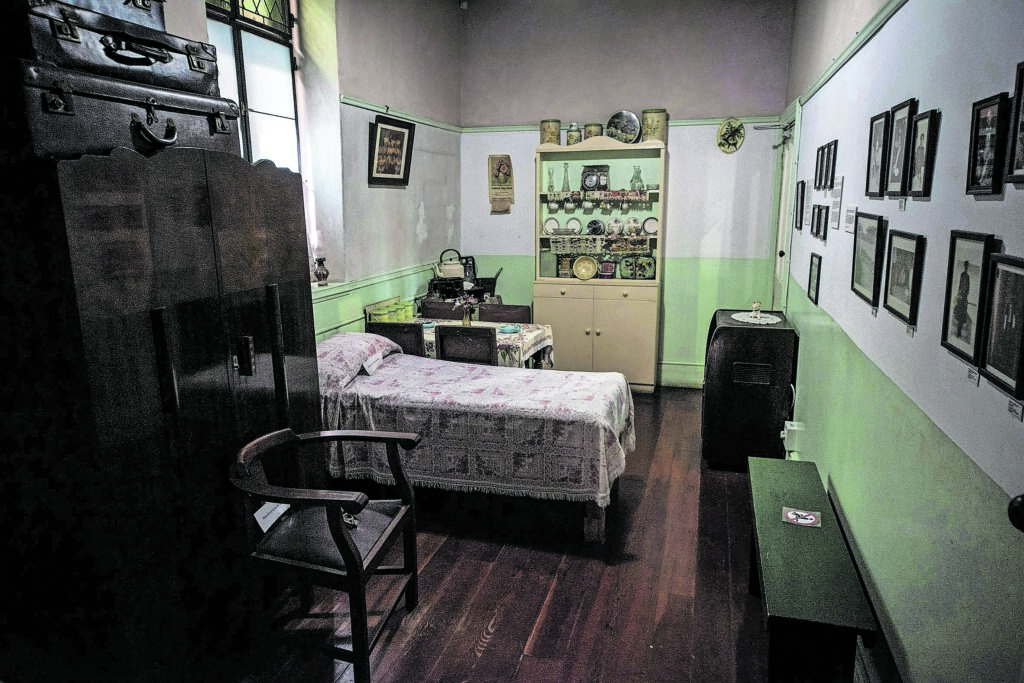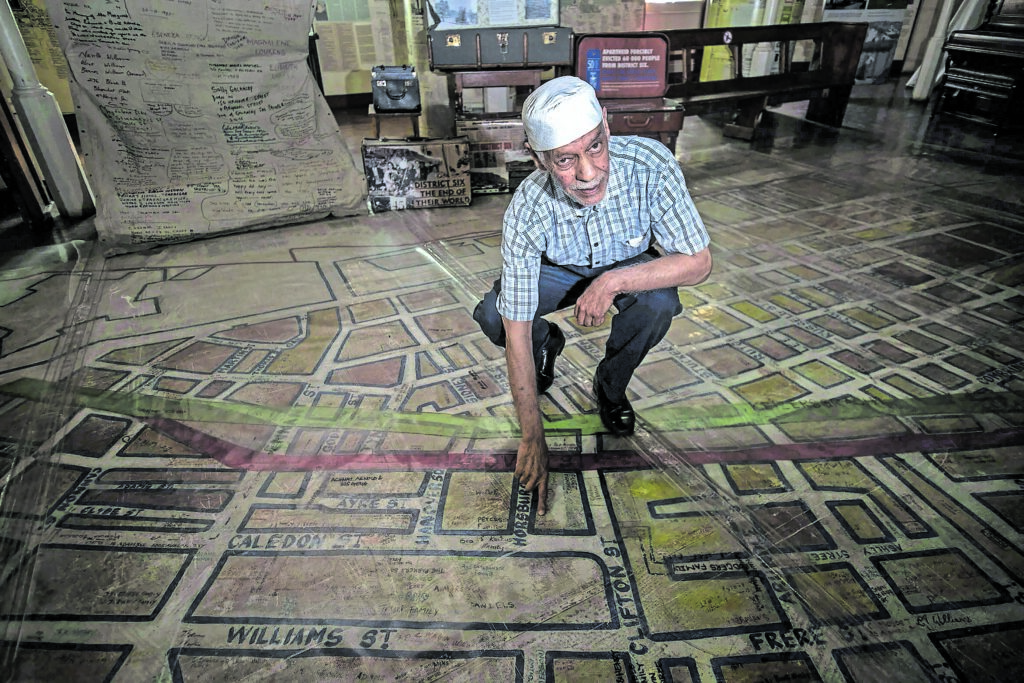History repeats itself: On 14 November 2016 the City of Cape Town law enforcement officials break up makeshift shelters in District Six. (David Harrison/M&G)
For more than two decades the District Six Museum has told the story of how apartheid brutally upended the lives of people living in this part of Cape Town. Then the pandemic dealt the museum a heavy blow, forcing it to close its doors. But the fighting spirit of its patrons has opened them again. Photographer David Harrison visited this place of memories to show that their notes of true commitment do count
When the people living in District Six were handed eviction notices back in 1966 they called them “love letters”.
“This was a cynical comment on the casual indifference handed down by the apartheid state, who saw only a ‘black spot’ that had to be removed, and not the deep ties that bound a community together,” according to the District Six Museum’s website.
 Memories: The District Six Museum in Buitenkant Street, Cape Town, houses items showing apartheid’s laws. (Photo by David Harrison)
Memories: The District Six Museum in Buitenkant Street, Cape Town, houses items showing apartheid’s laws. (Photo by David Harrison)
The museum, which opened in December 1994, tells the story of the Cape Town suburb in creative ways.
Chrischené Julius, the museum’s acting director, said that one of the key aspects the museum reflects is the idea that the Group Areas Act shaped the South African landscape in ways that have not been adequately researched — or “really -spoken about as a country”.
 An exhibit at the District Six Museum in the Methodist Church in Buitenkant Street, Cape Town. Photo by David Harrison
An exhibit at the District Six Museum in the Methodist Church in Buitenkant Street, Cape Town. Photo by David Harrison
“The museum’s education work puts an emphasis on how this law impacted how people see each other, how they engage with each other today, how they engage with the city today — and I think in that sense it’s a universal story, it’s a national story that people can relate to,” she said.
The museum, like many institutions that rely on visitors to generate an income, was hit hard by the lockdown and the ban on international travel imposed in response to the Covid-19 pandemic.
It reopened in early September, but with limited hours, after more than seven months of being closed.
Without adequate income staff salaries and rent could not be paid and closure seemed imminent.
An exhibit of a home and games children played on the streets reflects people’s lives before the inner suburb was demolished. Photos: David Harrison
Fundraising was the only option. The museum called for the public to send it “love letters” — only this time these would be letters of love and support through financial donations.
Julius says the response has been overwhelming. “It was very eye-opening, with so many people making financial donations, from small ones of R50 to one for R200 000.
“The response has been fantastic because it’s shown that although the museum is very clear that its core mission is about the forced removal in District Six and Cape Town, the response illuminated that people see us as a site of national importance.”
The museum was also one of 19 others in the Western Cape that benefited from the provincial department of cultural affairs and sport’s R1.3-million Covid relief funding for the loss of revenue.
 Museum co-founder Noor Ebrahim points to a floor map at the District Six Museum at the street where his home was before the forced removals from the area during the 1970s. (Photo: David Harrison/M&G)
Museum co-founder Noor Ebrahim points to a floor map at the District Six Museum at the street where his home was before the forced removals from the area during the 1970s. (Photo: David Harrison/M&G)
Noor Ibrahim, one of the founders of the District Six Museum, photographed the forced removals and demolitions in 1970. “Having worked here at the museum for so much of my life, having to stay at home during the lockdown was nerve-racking and frustrating. But this museum can’t close. We won’t close.”
Before Covid, the museum ran workshops for former residents and for universities and schools.
“Hopefully by January things will pick up again and we will survive. This is a very important museum, especially for our children. We tell the story, we’re educating them about our past,” Ibrahim said.
[/membership]